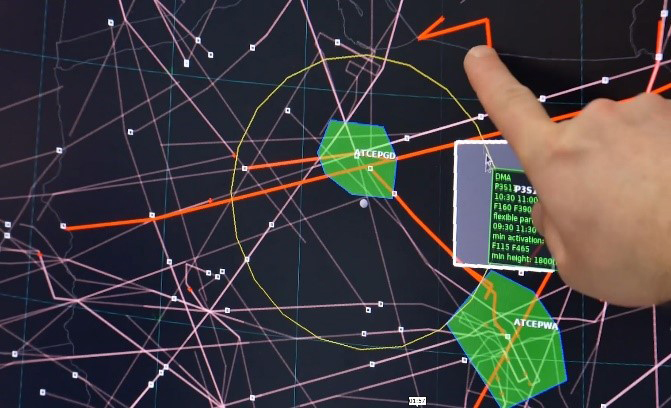SUPPORTING MILITARY USER NEEDS WITHIN THE NETWORK
This Solution was formerly part of PJ.07-03-W1 mission trajectory driven processes and PJ-08-01-W1 dynamic airspace configurationdynamic airspace configuration
Europe’s armed forces operate more than 150,000 flights per year. To accommodate these flights, the airspace is often closed, sometimes at short notice, to civil traffic. Given the growth of air traffic demand and complexity, SESAR is developing operational and technical solutions that allow more flexible civil-military cooperation to maximise the use of airspace. Key to this cooperation is a dynamic coordination between wing operation centre (WOC) and local DAC actors, specifically national airspace management (ASM) and local air traffic flow & capacity Management (ATFCM), throughout collaborative decision making on a single 4D mission trajectory data set. The new concepts enable collaboration in real time during the pre-tactical phase, thereby allowing for increased flexibility in airspace management compared to the existing strategic collaboration paradigm.
Building upon the previous SESAR achievements in the development of the initial mission trajectory (iMT) and advanced flexible use of airspace (A-FUA) concept elements, the solution facilitates a step forward to a flexible and dynamic integration of military mission into the future European ATM environment.
The integration of dynamic mobile areas (DMA) type 1 and 2 into the definition and development of iMT (initial mission trajectory) design principles for airspace reservation (ARES) into both the definition and development of MT and dynamic airspace configuration processes will enable an optimised and coordinated organisation and management of airspace and traffic flows in medium to short-term ATM planning phase and improved collaboration between civil and military ATM actors.
Integration of military Air Traffic Management (ATM) demand, which evolves through trajectory lifecycle, enables a better balance between traffic demand and airspace capacity throughout civil-military collaborative decision-making (CDM) process.
BENEFITS
Enhanced en-route capacity and predictability
increased environment and fuel efficiency
Improved civil-military cooperation/coordination and flexibility.
Datapack

